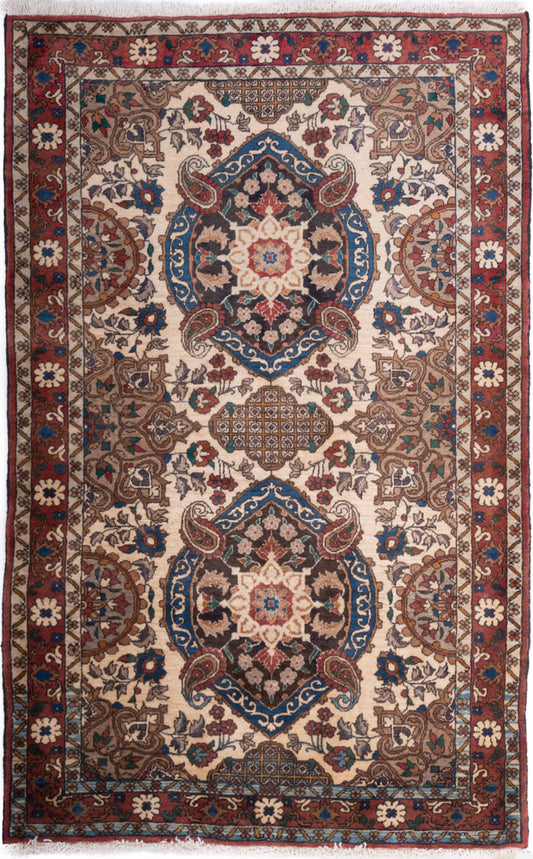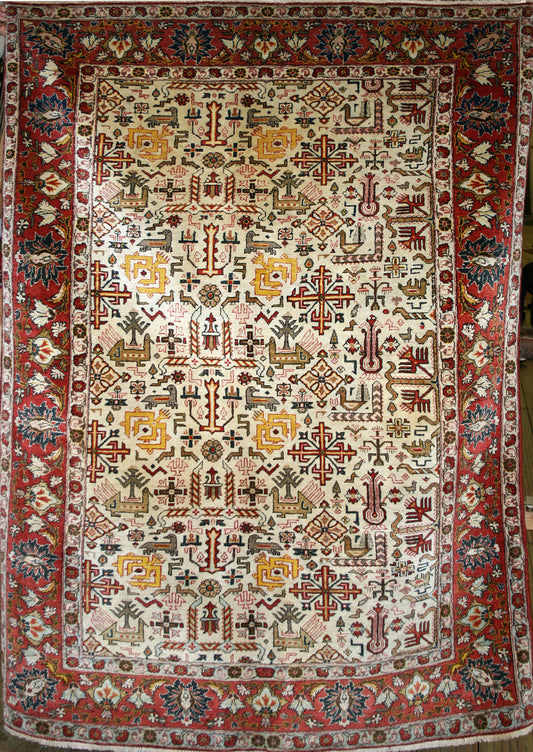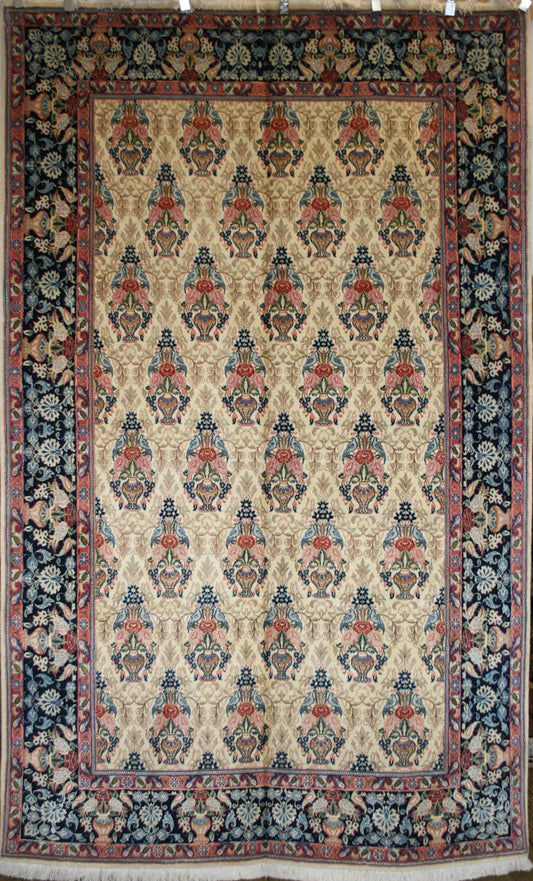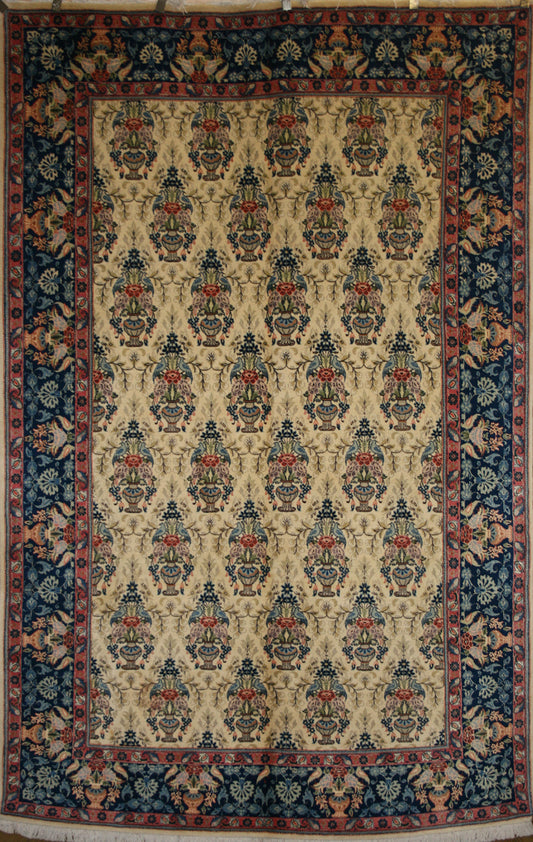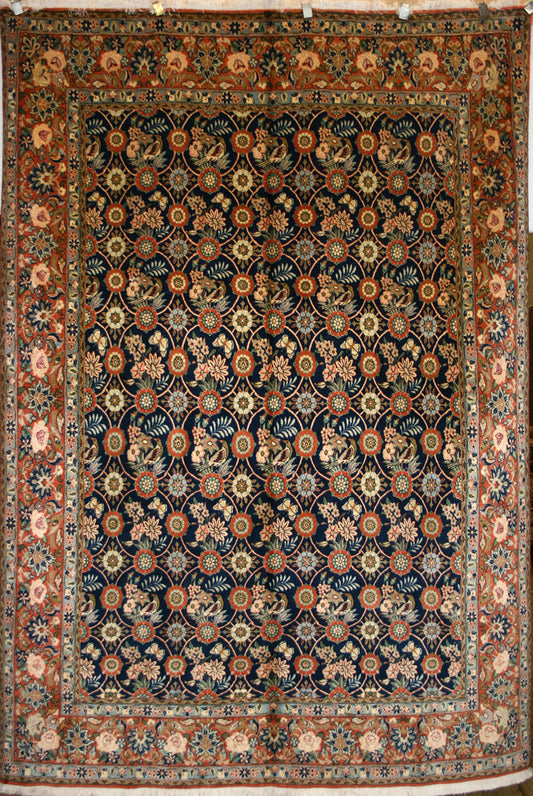Varamin Rug History & Origin Guide
Varamin Rugs: A Journey Through the Art and History of Persian Rug Weaving
Step into the world of Varamin rugs, a beautiful testament to the rich history and artistic prowess that Iran's weavers have to offer. Varamin (also spelled Varāmīn, Veramin, Varaman), is a region in Iran revered for its distinct rugs, each piece imbued with a unique blend of tradition and craftsmanship. This guide will take you on an exploration of the origins, symbolism, and production techniques that define Varamin rugs.
Importantly for Little-Persia, Varamin is where it all began. Founder, Reza, was gifted a small Varamin rug from his father after returning to Iran from his studies in the UK. This gift blossomed a passion which has grown over the decades to amass one of the largest collections of Persian & Oriental rugs in the UK.
Unveiling the Roots of Varamin
Nestled to the south-east of Tehran, the city of Varamin is a treasure trove of ancient culture and traditional artistry. Its history is steeped in the migrations of tribes such as the Afshar, Vafsi, and Kurds, each contributing to the city's vibrant tapestry of rug-weaving traditions. The intricate designs and high-quality materials used in Varamin rugs are a testament to the region's rich heritage and the skill of its weavers.
Symbolism in Varamin Rugs: A Visual Language
One of the most striking aspects of Varamin rugs is their intricate motifs, each carrying a deep symbolic meaning. A common feature is the 'Mina-Khani' design, comprised of floral elements arranged in a diamond lattice, believed to symbolize the garden of paradise. Another popular motif is the 'Herati', also known as the 'fish pattern', representing life, prosperity, and fertility.
First-hand accounts from local weavers suggest that the motifs are not merely decorative, but a form of storytelling. Each rug is a woven narrative, depicting tales of life, nature, and the deeply held beliefs of the weaver.
Materials and Techniques: A Testament to Craftsmanship
Varamin rugs are traditionally woven with high-quality wool sourced from local sheep. The pile's soft texture and durability are complemented by the strength of the cotton or wool foundation. This careful selection of materials, coupled with the weavers' skillful use of the Persian (or Senneh) knot, results in a rug of exceptional quality and longevity.
The weavers of Varamin take great pride in their craft, a sentiment that I've observed firsthand during a visit to the region. The meticulous attention to detail, from the initial design process to the final stages of knotting and finishing, is a testament to their dedication and passion for rug making.
Exploring the Nearby Rug-Producing Regions
While Varamin is renowned for its distinctive rugs, it is not the only rug-producing region in Iran worth exploring. Nearby cities such as Tehran, Kashan, and Isfahan are also celebrated for their unique rug-making traditions. By exploring the diverse range of rugs from these areas, one can gain a broader understanding of the rich tapestry of Persian rug weaving.
Embracing the Legacy of Varamin Rugs
Varamin rugs represent a captivating blend of history, art, and culture, reflecting the skill and dedication of the weavers who create them. Their intricate motifs, vibrant colours, and exceptional craftsmanship make these rugs a timeless addition to any interior space, offering a glimpse into the rich heritage of the region.
Climate and Weather
Varamin experiences a semi-arid climate, with hot and dry summers and cold winters. The region sees minimal rainfall throughout the year, which contributes to the arid landscape. Despite these harsh conditions, the local weavers have adapted their rug-making techniques to thrive in this environment.
Best Time to Visit Varamin
Given the region's extreme temperatures, the best time to visit Varamin is during the spring (April-May) or autumn (September-October) months. The mild weather during these periods provides a comfortable environment for exploring the city's rich history and rug-making traditions.
Top Tourist Destinations in Varamin
Varamin is home to several historical and cultural sites that showcase the region's rich heritage. Some of the must-see attractions include:
- Jameh Mosque of Varamin: A stunning example of 14th-century Persian architecture, this mosque boasts intricate brickwork and impressive calligraphy.
- Imamzadeh Yahya: A beautiful shrine dedicated to Imam Yahya, a revered figure in Varamin's history.
- Caravanserai of Varamin: A historical rest stop for travellers on the Silk Road, this caravanserai provides a fascinating glimpse into Varamin's past as a trading hub.
- Aladdin Tower: also known as Gunbad-i Ala al-Din (the dome of Aladdin) while perhaps not a major tourist destination, the rug connotations are quite fun.
Cultural and Artistic Events in Varamin
Varamin hosts several cultural and artistic events throughout the year, celebrating the region's rich history and traditions. These events provide an excellent opportunity for visitors to immerse themselves in the local culture and witness the rug-making process first-hand. Some notable events include:
- Varamin Carpet Festival: Held annually, this event showcases the best of Varamin's rug-making traditions, with local weavers displaying their finest creations.
- Nowruz Celebrations: As part of the Iranian New Year, Nowruz festivities in Varamin feature traditional music, dance, and other cultural performances, offering a unique insight into the region's customs and beliefs.
By understanding the history, symbolism, and techniques behind Varamin rugs, you can fully appreciate the beauty and value of these unique masterpieces. With each rug, you not only acquire a work of art but also contribute to the preservation of an age-old tradition and support the livelihood of the local weavers. Varamin rugs are truly a timeless investment, one that will be cherished for generations to come.
Browse Our Current Selection of Varamin Rugs
-
Semi-Antique Persian Varamin Rug
Regular price £795.00Regular priceUnit price / per -
Semi-Antique Persian Varamin Runner Rug
Regular price £2,340.00Regular priceUnit price / per -
Semi-Antique Persian Varamin Rug
Regular price £4,495.00Regular priceUnit price / per -
Persian Varamin Wool & Silk Rug
Regular price £2,995.00Regular priceUnit price / per£3,495.00Sale price £2,995.00Sale -
Persian Varamin Wool & Silk Rug
Regular price £2,995.00Regular priceUnit price / per£3,495.00Sale price £2,995.00Sale -
Persian Varamin Wool & Silk Rug
Regular price £3,995.00Regular priceUnit price / per

